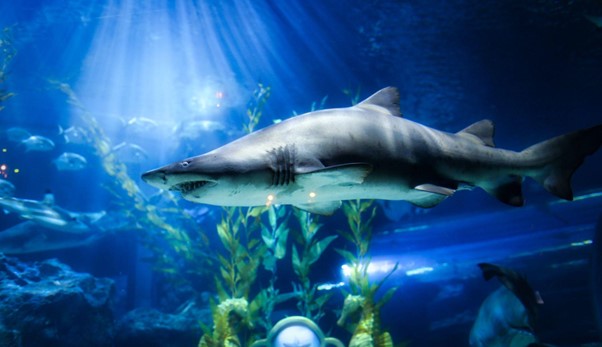“Survival of the fittest!” – The phrase suits here the best! Sharks have been living in oceans for a longer period of time. With the passage of time, they undergo various changes to cope with the environmental fluctuations.These adaptations help sharks to thrive in the changing conditions such as temperature and climate.
Some adaptations extended across the entire shark’s kingdom which helps them to swim, hide and hunt the prey efficiently. Sharks have developed strong senses and special organs which hold them at the top of the ocean habitat – the apex predator! Let’s drool into the details to find out what adaptations make sharks suitable to their surroundings!
How Sharks Adapted to their Environment
Sharks undergo various adaptations to live in the changing environmental conditions – in order to survive, they must adapt to fit into their environment. Being the top predator of the food web, sharks have developed exceptional adaptations which permit them to hunt the prey without being hunted by the other predator of the ocean!
Following are the adaptive features of the sharks:
Survival Adaptations
Sharks are the migratory animals that travel long distances to live in the surroundings that are best suited for them. It has always been imagined that sharks are bloodthirsty creatures that attack humans and are thus named as man eaters! But the reality lies far away from it – humans are a threat to them. If sharks feel threatened in their natural habitat then they show migratory behavior and move to the environment which is safe for them. Even if the atmosphere doesn’t suit them then they undergo fluctuations and adapt to the environment only for survival.
Swimming Adaptations
To float deep in the ocean water, sharks have many adaptive features which help them in swimming throughout the ocean without utilizing much energy. Sharks have a torpedo shaped body with pointed snouts and tapered tail which reduces the resistance in water. Moreover, the dermal denticles and sharps scales that are present all over the body provide protection from severe injuries. The liver of sharks provides them buoyancy, the multiple pairs of fins move with agility in the ocean water, make sharp curves and swim both in the upward and downward direction.
Skeletal and Teeth Adaptations
Instead of bones, sharks have cartilage which is much lighter than bones, it provides flexibility to the heavyweight shark’s body to swim and travel long distances without being sinking to the bottom of the ocean. Talking about teeth, sharks are able to lose their teeth and replace it with a new one! Throughout their life span they have more than 30,000 teeth. Those which feed on small animals usually have flat teeth and the other species which feed on large animals have sharp and pointed teeth.
The apex predator has many rows of saw shaped teeth which extend to their throat. Some species of sharks such as Great white sharks and Tiger sharks are able to flick their teeth forward – this adaptive feature helps them to clear the ocean from dead remains.
Hunting Adaptations
Sharks are known as one of the most active and efficient hunters of the ocean. Sharks have a well developed sense organ called Ampullae of Lorenzini present on the snout that sense the smell of the prey. The shark’s skin is covered with scales which sense the abnormal water current and signals about the presence of the prey in their vicinity. Moreover, the inner ear and lateral line are so well developed that they detect the nearby movements of the victim.
Camouflage Adaptations
The sharks are able to camouflage to blend with the environment. Sharks have blackish to grayish colored skin which helps them to merge with the surroundings, thus protecting them from other predators. Furthermore, some species such as Wobbegong sharks and Carpet sharks mostly reside at the bottom of the ocean, they are so still that their camouflage makes them look alike to the ground or reef on which they are relaxing.
Final words
Sharks are living in the oceans about 400 million years ago, definitely within the time zone, they undergo various modifications to survive. Sharks are capable of adapting to different environments so fast, by regulating their physical features to fit into the changing surroundings. They maintain their body temperature to live in different climatic conditions. The incredible skin of sharks provide them protection from enemies and other predatory animals. The skin color provides them the ability to camouflage with the ocean waters! This shows that sharks go through the complete transformation only to survive!







